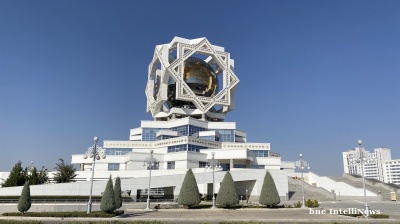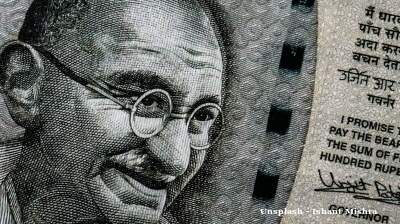The ruble soared on February 20 to hit 56.48 vs the dollar and 69.90 vs the euro as oil prices passed the psychologically important $65 per barrel mark, making the Russian currency one of the best performing in the world this year.
The Russian ruble has been extremely volatile in recent years, as it has followed the even more unstable oil prices around over the graph paper. It makes doing business in Russia or with Russia feel like a rollercoaster ride that is designed to catch you unawares with tight bends and precipitous drops that leave your stomach – and profits – behind.
“Predictability” has become the new mantra of the liberal Kremlin faction that runs Russia’s finances, and the government is now trying to do something about the currency's volatility.
The Russian Ministry of Finance released a plan in February to use Russia’s oil and gas revenues to buy and sell foreign currency in the domestic foreign exchange market, in compliance with the so-called “fiscal rule” that has been reintroduced now the country's economic crisis is receding.
The rule means excess revenues earned from raw material exports is sterilised in the fund so it can't force the appreciation of the currency. “And the effect is already visible on the exchange rate dynamics as the correlation between the ruble and the cost of a barrel of oil has already been considerably weakened,” says Oleg Kouzmin, chief economist at Renaissance Capital.
That also means the Central Bank of Russia (CBR) is getting back into the foreign exchange markets, partly to implement the rule, partly to smooth out the fluctuations somewhat and partly as the central bank says that it wants to build up gross international reserves (GIR) to $500bn over the medium term from the $450bn reserves it started this year with. And if at all possible, the Kremlin would prefer an export-boosting weak ruble, according to hints dropped by President Vladimir Putin last year.
“The expected volume of oil and gas revenues in the federal budget in excess of the oil price baseline ($40) in February 2018 is projected at RUB298bn ($5.3bn). This sum will be used for foreign currency purchases. The financial interventions will start on February 7, 2018 and will go on until March 6, 2018. During that period, RUB15.7bn will be spent daily. The acquired foreign currency will be credited to the accounts of the Federal Treasury at the Bank of Russia,” a CBR statement said this month.
The Russian Finance Ministry returned to the fiscal rule back in February 2017, when it began purchasing foreign reserves from oil and gas revenues exceeding the oil price baseline. With oil prices averaging around $55, the Ministry spent RUB113bn on foreign currency markets last February. Overall, during the last year, Russia spent RUB830bn, for which it was able to purchase $14bn. Over time, with the growing price of oil, these purchases have been growing in significance. The ministry reached a record-high volume of purchases of RUB257bn in January this year, only to add another RUB40bn in February. If the price of oil stays above $60 per barrel, the ministry will spend around RUB2.8 trillion this year, three-times more than last year.
That said, in addition to purchasing foreign currency and putting it into a special ring-fenced central bank account, last year the Finance Ministry was selling money from Russia’s Reserve Fund to finance the budget deficit – a process that came to an end in January when the Reserve fund was exhausted.
The double-edged policy neutralised the effect that the foreign currency purchases had on the ruble’s valuation. Whatever remained in the Reserve Fund has since been merged with the National Welfare Fund, a second reserve fund established to cover pension payments in the mid-term.
This means that this year’s record-breaking foreign currency purchases by Russia’s Finance Ministry are no longer accompanied by the opposing force in the form of foreign currency sell-outs. According to some Russian analysts, this new situation could seriously influence the ruble-dollar exchange rate.
“Such a high volume of foreign currency purchases will have a cumulative negative effect on the ruble exchange rate. According to our estimates, the ruble will lose 5-6 % of its value against the dollar,” Vladimir Kiselev, financial analyst from the investment company Dokhod, said in an interview.
The new Norway
From a longer-term perspective, the ruble remains a highly volatile currency. In 2014, one dollar was equal to around RUB35. Two years later, in 2016, it dropped to RUB82. At the end of 2017, the dollar-ruble exchange rate was around RUB60, only to appreciate against the dollar to around RUB56 in February this year.
This level of volatility has attracted many FX traders seeking short-term profits. It took a mere two months (November 2017 to January 2018) for the ruble to appreciate by around 8% against the dollar. And, according to many observers, it can take just as little time for the ruble to get back to its last November’s levels.
In 2018, most analysts expect to see a ruble depreciation against the dollar. According to VTB Capital, the dollar-ruble exchange rate will average around RUB60.7 to the dollar in the first quarter of 2018. Aton Capital’s macro analysts see the exchange rate averaging around RUB61-RUB62 throughout this year. In general, a weaker ruble is negatively affecting Russian companies selling products locally in domestic currency, but it benefits Russian exporters.
But now the authorities want to take the currency in hand. Earlier this year, Russia’s Finance Minister Anton Siluanov said that the ministry is prepared to do whatever it can to prevent the Russian currency from appreciating.
“Oil prices have gone up, the ruble is getting stronger, but we have already began to carry out financial operations involving the purchase of foreign currency under the fiscal rule. We won’t allow the ruble to appreciate,” Siluanov said at the Gaidar Forum in Moscow in January.
According to the minister, Russian business suffers from ruble appreciation, as it becomes less competitive on the global markets. “The fiscal rule implementation will also bring a lot of reserves for the federal budget. This year, we expect revenues from oil and gas worth of 3% of GDP to go to the reserves,” he added. With Russia’s GDP in 2018 projected at RUB1.52 trillion, 3% would amount to RUB45bn.
This year’s fiscal rule is Russia’s third attempt at decoupling the value of the ruble from the price of oil and turn Russia into “the second Norway”, as Russia’s finance minister Siluanov likes to put it.
The third rule is different from the previous two in that it provides a higher degree of predictability to medium-term budgeting. Older rules were based on historical oil prices, but the new one determines the amount of revenues available to the federal government for spending by a fixed oil price benchmark ($40 per barrel in 2017 prices).
"We have economic stability again," Siluanov said at the Gaidar Forum. "Now we need predictabililty."
Features

COMMENT: For Asia, dealing with Europe isn’t about achieving success; it’s about concealing failure
To be taken seriously in Asia, Europe must rediscover the courage to deliver, not merely declare. Asia has moved on to execution. Europe is still editing its initial policy draft.

Washington has a new focus on a Caspian energy play
For most of the last three decades since winning independence, Central Asia has been a bit of a backwater. Not any more. The Trump administration is becoming more focused on Turkmenistan's vast gas reserves and can smell money and power there.

BOTAŞ and Turkey’s hub ambition: from “30-year dream” to cross-border reality
For Ankara, the symbolism is as important as the molecules: Turkey’s energy map is shifting from end-market to hub.





